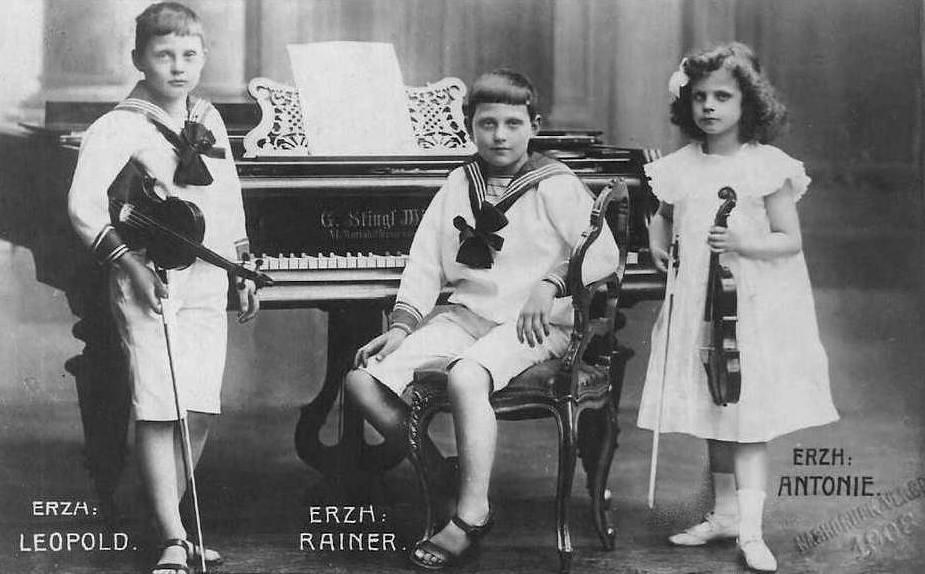
Austrian Nobility

Figure 1.--Here we have a portrait of three children from an Austrian nobel family--three of the children of
Archduke Leopold Salvator, Prince of Tuscany (1863-1931) and the Infanta Blanca of Spain (1868-1949). They were named Leopold (1897-1958), Rainer (1895-1930), and Antonie (1899-1977). Erzh. or Erzherzog means archduke or archduchess. They were members of the Tuscan branch of the House of Habsburg-Lorraine which cane into existence during the reign of Maria Theresa. Apparently after the unification of Italy and the expulsion of the Austrians, the Tuscan Branch became part of the Austrian nobility. The family lived in Vienna where this portrait was taken in 1908. The boys are wearing open toe sandals without socks which was apparently not seen as appropriae for a girl. This is somewht unusual. Sandals like this were just beginning to be worn and more common for outdoor play.
|
|
The Austrian nobility (österreichischer Adelis) a very complicated topic in tht Austria is a very small place, but the territiry ruled by the Hapsburgs became a large empire which at times include the Holy Roman Empire, essentially all of modern Germany. nd the Hapsburgs at times ruled pat\rts or all of Bohemia, Hungary, Poland, Croatia, Dalmatia and other territories. Thus many non-Austrian and non-German nobilities were included in what is commonly called the Austrian nobility. It inclluded nobles living in the Habsburg-ruled lands and who owed their allegiance to the Hapsburg dynasty and Emperor. This included many different ethnicities which complicate the topic, especially as ethnicity with is nationalist connottions became increasingly important after the French Revolution. A noble from Galicia (Austrian-controlled Poland), for example, could call himself a Polish noble, but he rightfully belonged to the Austrian nobility as he had to swear allegince to the H[sburg Emperor. World War I brought and end to the Austro-Hungarian Empire abd Hapsburg Monarchy. It was abolished an a small Austrian republic declared after the War. The nobility was also officially abolished (1919). They lost their legal privilges, but remained a respected status group. Austria's system of nobility today is similar to that of Germany, largely owing to the fact that as both countries were for centuries aart of the Holy Roman Empire. Today it is mostly actual Austrian nationals that regard themselves to be part of the Austrian nobility.
HBRC

Navigate the Boys' Historical Clothing Web Site royal pages:
[Return to the Main Austria pages]
[Return to the Main royal pages]
[Belgium]
[France]
[Germany]
[German states]
[Italy]
[Monaco]
[Netherlands]
[Norway]
[Romania]
[Russia]
[Spain]
[United Kingdom]
Created: 2:53 AM 6/6/2013
Last updated: 2:53 AM 6/6/2013




